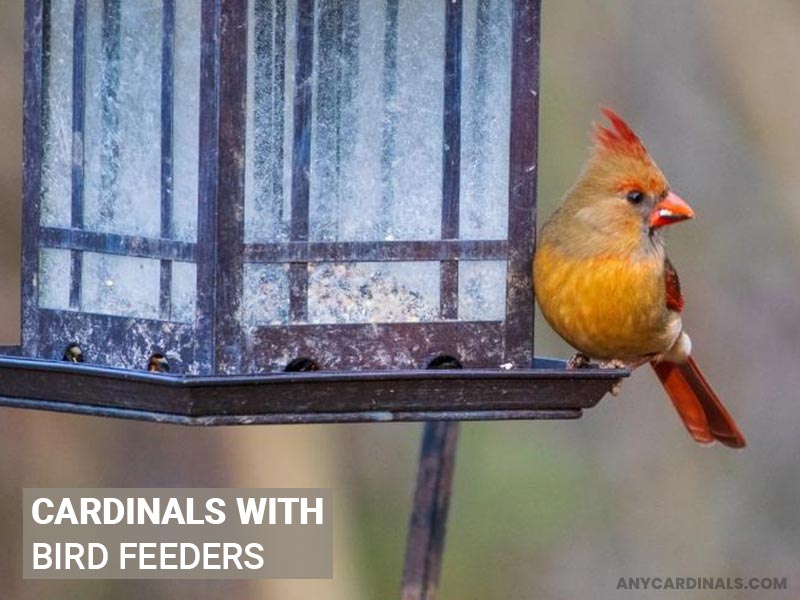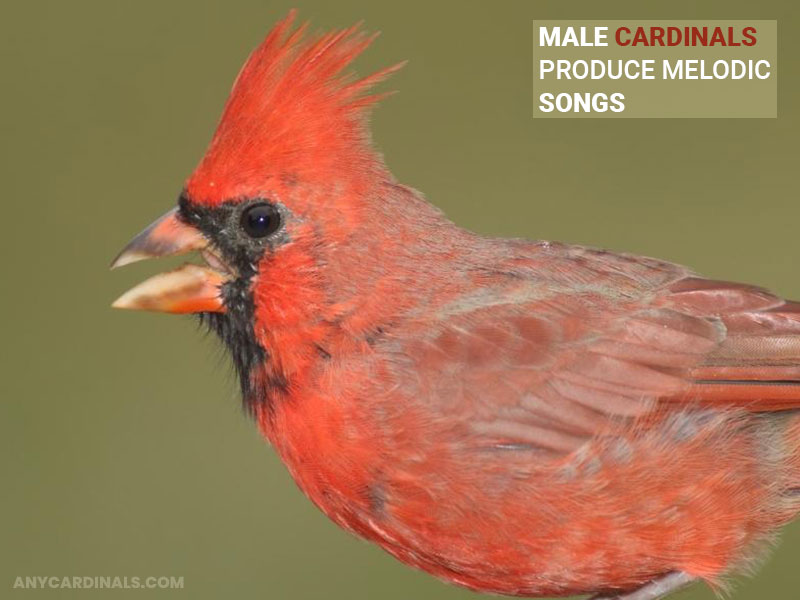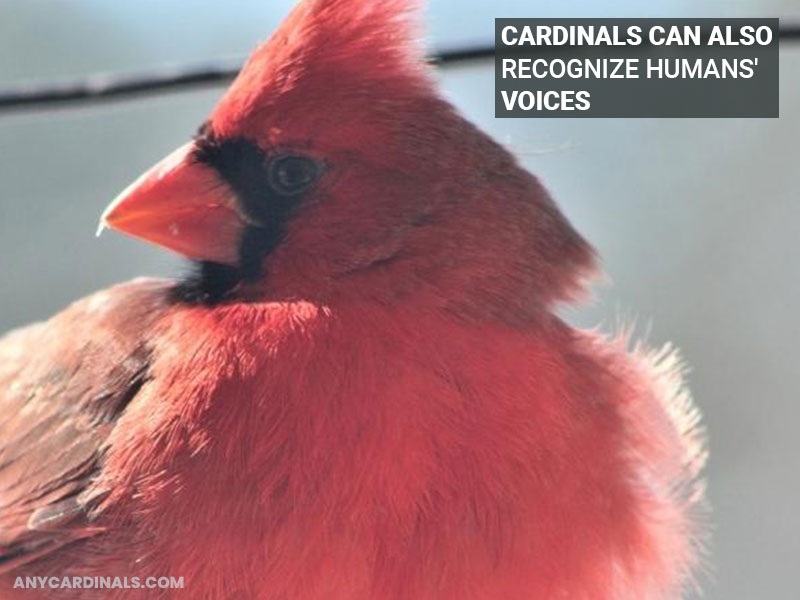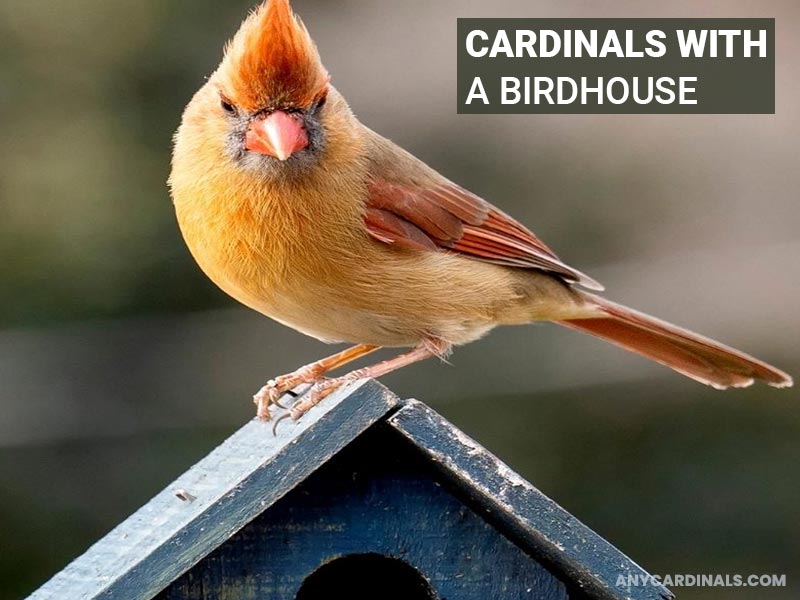How Smart Are Cardinals? 7 Brilliant Bird IQ Facts
It’s no wonder how beautiful the cardinals are. Every bird watcher praises these birds for their beauty. But very few know about cardinals’ smartness. Many birders have no idea about “how smart are cardinals?” What do you think? How intelligent are these birds?
The short answer to this question is they are brilliant compared to other birds. They show their smartness in many aspects, including how they protect themselves, build their nest, forage for food, and more.
Below, we have briefly described those facts proving cardinals’ intelligence. So, let’s read on.
Related blog about cardinals behavior:
- Cardinal Territorial Behavior and Hummingbird Interactions
- Cardinal Aggression and Territorial Behaviors
Signs of Red Cardinal Intelligence
Although cardinals boast tiny brains, they leave other animals with big brains way behind with the help of brilliant activities. Below, we have discussed these activities to give you a glimpse of cardinals’ smartness.
01. Ward Off Lice:
How cardinals prevent lice infestation tells a lot about their smartness. To ward off lice, these birdies cover themselves outrightly with ants. Alongside cardinals, Baltimore orioles, turkeys, and other birds also do the same to eliminate lice.

So how do ants help cardinals and other birds to eradicate lice? Well, FYI, ants release formic acids to repel attackers, which attack lice infested on cardinals’ bodies, and eventually, lice get killed by such acids.
It really astonishes researchers when they think how cardinals figure out that ants can help those birds ward off lice. Not only that, but how cardinals utilize ants also amazes avian experts.
This behavior, known as anting, is a deliberate act where they rub ants on their feathers or allow ants to crawl over them. Studies suggest this may also reduce fungal infections, showcasing their advanced self-care strategies.
A close view of cardinal behavior shows how they balance love, defense, and care in the wild.
02. Trickily Avoid Feeding Competition:
Cardinals choose to visit bird feeders early in the morning and late in the evening. It’s because feeders tend to be free from other birds during these specific periods.

Consequently, cardinals have low to no competition while gobbling their favorite food, black oil sunflower seeds, from bird feeders. Cardinals’ this behavior is a true sign of smartness, and this behavior makes many ornithologists bewildered.
They observe feeder activity patterns, timing their visits when species like sparrows are less active. This strategic timing maximizes food intake and minimizes energy spent on conflicts.
03. Produce Distinct Songs:
Both male and female cardinals can yield different songs and calls based on their circumstances. For example, male cardinals produce melodic songs during the courtship rituals.

On the contrary, their calls become harsh and gain a high pitch when they sense any danger and alarm other birds in the group. Besides, cardinals generate diverse sounds while feeding their offspring or signaling their mates to bring food.
The tunes of their calls and songs change according to their location and circumstances. You can say that calling and singing help cardinals communicate like the language does for us.
Their songs include up to 16 distinct phrases, learned and adapted based on local dialects. This ability to modify vocalizations for specific contexts reflects cognitive flexibility rare among songbirds.
04. Attack Intruders Smartly:
You may know that cardinals become territorial during the breeding season. At this time, they don’t tolerate invaders around their areas. If cardinals notice any intruders, they attack those enemies.

Yes, it’s a natural animal instinct but what sets cardinals different and proves them wise is how they attack prowlers. Some cardinals attack intruders from behind to defeat their enemies without letting them know about the forthcoming danger; what a cunning move it is.
Although cardinals exhibit intelligence in many aspects, they are seen to accomplish the dumbest tasks too. For instance, cardinals tend to fight with their own reflection during the mating season; funny, right?
This stealthy attack strategy involves assessing the intruder’s size and behavior first, allowing them to choose the most effective approach, often outsmarting larger birds like blue jays.
05. Recognize Human Voice:
Like many other birdies, cardinals can also recognize humans’ voices. They observe humans when they visit their backyards in order to eat food.

After a thorough observation, cardinals recognize humans as friends and enemies. If they consider a human a friend, they won’t fret about the person’s presence while gobbling food from feeders.
Otherwise, cardinals won’t visit the backyard or can fly away hearing the voice of humans whom they don’t consider friends.
They associate specific human voices with food availability or threats, a learned behavior that demonstrates memory and pattern recognition, comparable to that of corvids like crows.
06. Fly In A Flock:
Many people may not believe that unity is strength, but cardinals do. During the food scarcity, which hits particularly in the winter, cardinals congregate and forage for food together.
They fly towards various destinations in a flock, and they fly in such a way as to conserve more energy and defend against predators successfully; another smart move cardinals perform to thrive.
Flocking reduces individual predation risk and improves foraging efficiency. They position themselves strategically within the flock, often near the center, to conserve energy during harsh winters.
07. Avoid Using Birdhouses:
While many wild birds love staying inside high-quality birdhouses to increase their safety, cardinals don’t. You can never lure cardinals with a birdhouse; why? Cardinals reside in open areas covered with vegetation.

They choose such a place to live as they can monitor their family and predators and take necessary actions depending on the situation. But if they start living in walled spaces, they will be vulnerable as they can monitor neither family nor predators.
Hence, they avoid staying inside birdhouses, and this act shows how brilliant bird cardinals are.
Their preference for dense shrubs over birdhouses is tied to their need for quick escape routes and visibility. This habitat choice reflects an understanding of environmental risks and safety.
08. Share Responsibilities:
After pairing up, male and female cardinals share responsibility while building their sweet home. Male cardinals collect nest-building materials, including grass, twigs, and more, while females construct the nest.
Apart from that, after laying eggs, females take care of the eggs, and males stay busy collecting food. Cardinals share their responsibilities to maintain a happy and protected family like humans. So, these are all the acts that prove cardinals’ intelligence.
This division of labor mirrors cooperative behaviors in highly social species. Their ability to coordinate tasks enhances nest success rates, with males often feeding females during incubation.
Do Cardinals Recognize Humans?
Cardinals, the remarkable bird species, possess a surprising ability to recognize humans. They can discern human voices and curiously observe our presence when we visit their backyards. In fact, some cardinals even form affable bonds with humans, becoming frequent backyard visitors.

Astonishingly, these birds are capable of recognizing people’s faces and distinguishing between different human voices. Researchers have conducted experiments testing cardinals’ memory, demonstrating their attentiveness to human behavior by remembering the location of food hidden by humans.
Although cardinals are generally skittish and prone to flying away when humans approach, there are instances where they exhibit comfort and actively seek human companionship. It seems cardinals can develop recognition of individuals they perceive as non-threatening.
Tips for Observing Red Cardinal Intelligence
Best Times: Watch during spring breeding season to see territorial and courtship behaviors.
Binoculars: Use binoculars to observe anting or stealth attacks without disturbing them.
Feeders: Offer sunflower seeds in early morning to see their strategic feeding times.
Plant Shrubs: Dense vegetation like holly attracts them, allowing observation of their habitat choices.
Cessation:
Cardinals are intelligent, beautiful, and enigmatic bird species you can find out in the wild. Their behaviors have always made bird watchers and avian experts curious, and their stunning plumage pleases many birders.
We can conclude these birds are full of surprises that never end, even if you contemplate cardinals daily. However, that’s all for this article; we hope it gives you the answer you were looking for. You may stay connected with us on Facebook, Twitter & Pinterest for updates on this content type. Happy birding!
Image Credit:
- Youtube.com/@FrontYardVideo


Thank you for the article, Kawkab! We were wondering how intelligent cardinals are because this morning a cardinal turned around several times to look at us through our picture window while eating at the feeder–as if she was saying thank you. Other times cardinals have come up to the window to peck at the window after noticing the birdfeeder was empty as if to let us know–crazy! Of course I could be assuming a lot! Scott